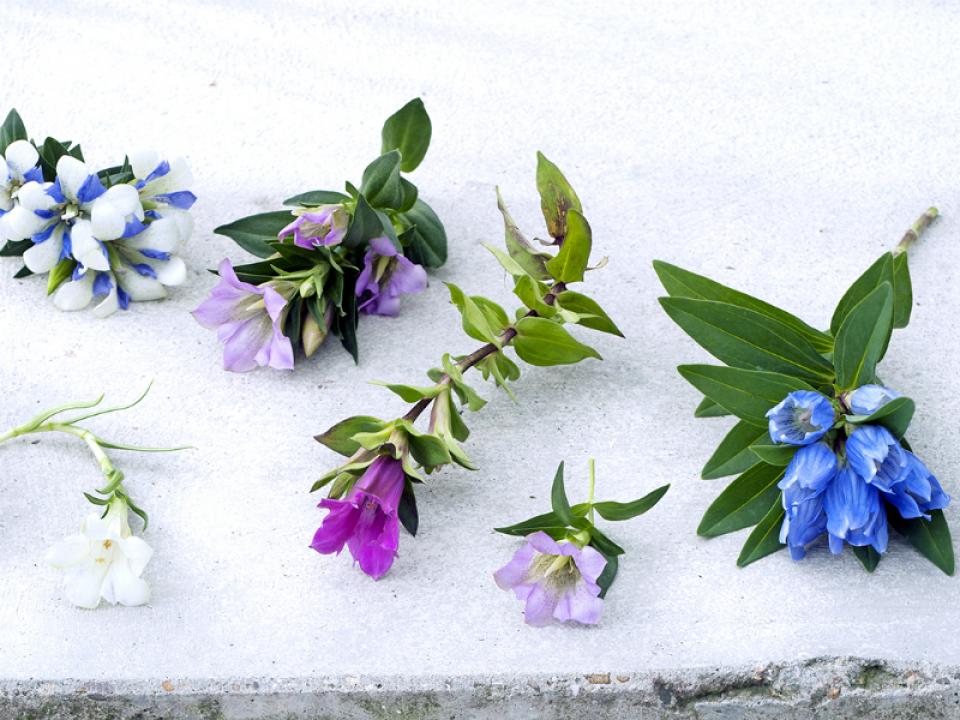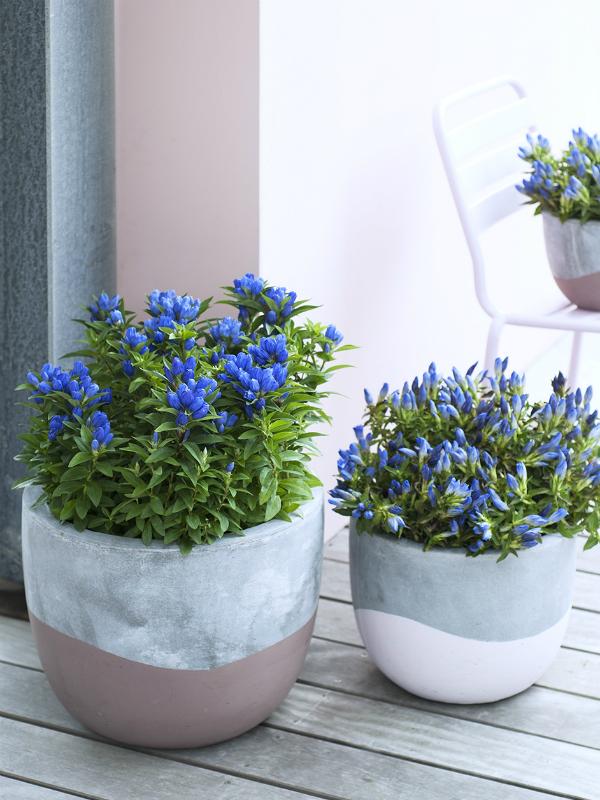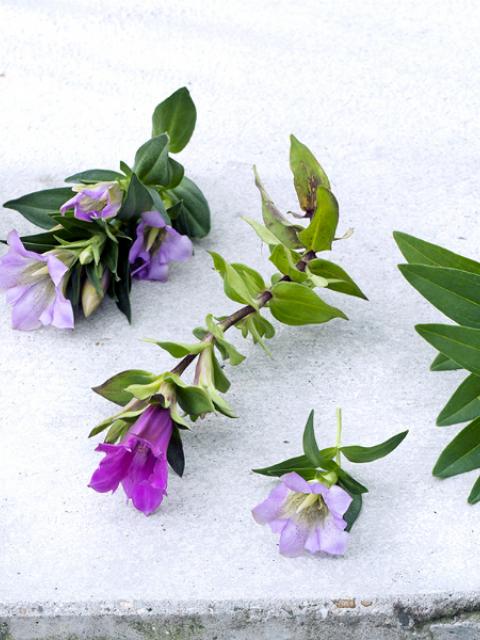Gentian (officially called Gentiana) is known for its deep blue trumpet-shaped flowers and narrow green leaves. There are also white, pink and yellow gentians, but blue is the most common and is also the best-known: painters have been waxing lyrical about it for centuries. It’s a strong plant that reaches a height of 10-30 cm and thrives in a challenging environment like a rock garden or sandy coarse soil. The more you treat it to fine soil and food, the more the plant will wane. So loving neglect is definitely the way to go.
Weather forecaster
Gentian is a member of a family that includes some 400 species. The plant particularly occurs in the temperamental regions of Asia, Europe and North and South America. In the past, those living in the mountains used it to find out whether it would be a harsh winter: the longer gentian continues flowering, the longer and harsher the winter would stretch into the New Year.
Trivia
-
The name is a tribute to King Gentius of Illyria (modern-day Albania, he lived from 180 to 68 B.C.) who is said to have discovered the plant’s medicinal properties.
-
Gentian has been used for centuries for preparing liqueurs, bitters and many herbal medicines.
-
The flower was a favourite of the poets Emily Dickinson and DH Lawrence, who both wrote beautiful poems about it.







